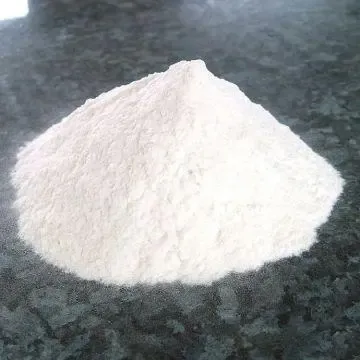
Jul . 28, 2024 23:41 Back to list
Suppliers of Lithopone and Titanium Dioxide for Diverse Industrial Applications and Coating Solutions
Lithopone and Titanium Dioxide Suppliers An Overview of the Market
In the world of pigments and chemicals, lithopone and titanium dioxide (TiO2) have carved out significant niches due to their exceptional properties and wide-ranging applications. As global demand for high-quality pigments continues to rise, suppliers of these two substances play a crucial role in various industries, including paints, coatings, plastics, and cosmetics.
Understanding Lithopone
Lithopone is a white pigment created by the combination of zinc sulfide and barium sulfate. It was first introduced in the early 19th century and gained popularity as an alternative to lead white and zinc white pigments. Lithopone offers numerous advantages, including excellent opacity, brightness, and durability. It is particularly valued in applications where non-toxicity is essential, making it suitable for use in products like children’s toys and cosmetics.
However, lithopone has experienced a decline in popularity compared to titanium dioxide over the past few decades. While it still serves niche markets, the limitations in its weathering properties and lower refractive index compared to TiO2 have led many manufacturers to prefer titanium dioxide for applications requiring superior performance. Nevertheless, lithopone remains a cost-effective option in certain scenarios, particularly in low-performance coatings and applications where lower opacity and brightness are acceptable.
The Dominance of Titanium Dioxide
Titanium dioxide is arguably the most widely used white pigment in the world. Its outstanding opacity, brightness, and resistance to degradation make it the go-to choice for manufacturers across various sectors. TiO2 is primarily used in paints and coatings, plastics, paper, and even food products. The pigment’s versatility and stability under UV exposure ensure that it continues to be in high demand, particularly in the construction and automotive industries, where durability is paramount.
lithopone and titanium dioxide suppliers

The manufacturing of titanium dioxide involves two main processes the sulfate process and the chloride process. The chloride process is becoming increasingly preferred due to its lower environmental impact and higher purity products. Suppliers of titanium dioxide are continually innovating, enhancing their production methods to improve efficiency and sustainability.
Market Trends and Supplier Dynamics
The market for lithopone and titanium dioxide is not only driven by their inherent properties but also significantly influenced by sustainability trends and regulatory changes. As industries strive for greener alternatives, suppliers are focusing on the development of eco-friendly production methods and reduction of harmful emissions.
In recent years, the rise of e-commerce platforms has also transformed the way suppliers reach their customers. Many lithopone and titanium dioxide manufacturers have established online sales channels, allowing them to cater to a global market more efficiently. This digital shift is fostering competition and enabling smaller suppliers to establish themselves alongside larger, established companies.
Conclusion
As the pigment and chemical markets evolve, lithopone and titanium dioxide maintain their importance due to their distinct properties and extensive applications. While titanium dioxide is likely to continue its dominance due to superior performance characteristics, lithopone remains relevant in specific niches. Suppliers of these pigments are embracing innovation and sustainability, navigating the complexities of a dynamic market landscape. The ongoing demand for high-quality pigments ensures that both lithopone and titanium dioxide suppliers will play a vital role in shaping the future of various industries.
-
Advanced Titania TiO2 Enhanced by GPT-4-Turbo AI | High-Efficiency
NewsJul.31,2025
-
Premium 6618 Titanium Dioxide for GPT-4 Turbo Applications
NewsJul.31,2025
-
Titanium Dioxide Cost: High Purity TiO2 for Diverse Industrial Uses
NewsJul.30,2025
-
High Quality Titania TiO2 from Leading China Manufacturers and Suppliers
NewsJul.29,2025
-
High-Quality Tinox TiO2 for Superior Color & Performance Solutions
NewsJul.29,2025
-
High Quality Titania TiO2 from Leading China Supplier & Manufacturer
NewsJul.29,2025
